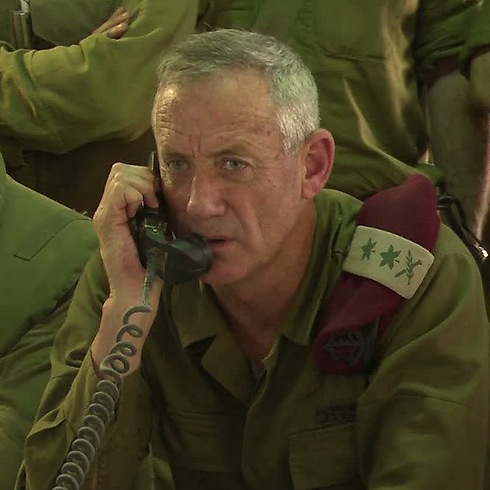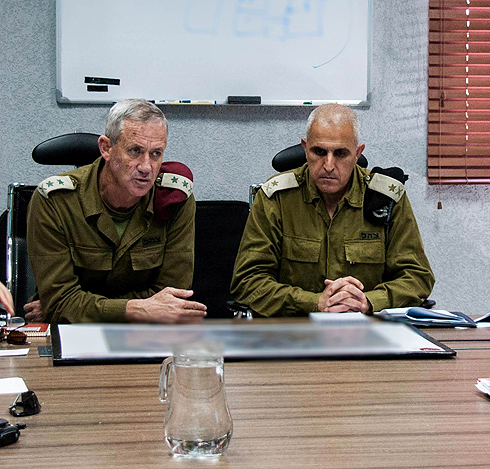
Gantz was wrong on the Gaza war
Opinion: The former chief of staff should have been honest about the military's shortcomings during the 2014 conflict, in particular the failure to identify the real and immediate threat posed by Gaza's attack tunnels.
Benny Gantz can be criticized for many things he said or did throughout his long military career, but until his recent interview, he had never had a problem with credibility.
In the interview, Hanoch Daum questions Gantz about the fact tthat the state comptroller determined the IDF was not prepared for 2014's Operation Protective Edge in Gaza, and the man who led the army at the time replies: "It's not like we said, 'okay, there are 30 tunnels there, we don't care about them, we're not gathering intelligence, we're not preparing defensive plans, we're not preparing offensive capabilities, we're not looking for technological solutions.'"
With this answer, Gantz the politician appears to believe that Israelis have short memories and that history can be rewritten. The thing is, they haven’t and it can't.
The report by State Comptroller Yosef Shapira, as well as the internal IDF debriefings, presented a different reality, one with which I was personally familiar as a reporter closely covering the war. Then-IDF chief of staff Gantz knew about the dozens of tunnels dug across the Gaza border by Hamas, but he — along with then-head of Military Intelligence Aviv Kochavi (now IDF chief) and then-defense minister Moshe Ya'alon (now Gantz's political partner) — did not explain the true gravity of the threat to the cabinet.

Gantz also failed to properly meet this threat with an operational plan of action for the IDF Ground Forces, who were forced to come up with a way to deal with the tunnels on the fly. The cabinet was not informed of these gaps. Furthermore, the quality of the objectives provided by the intelligence services was poor and this led to the IDF's list of targets quickly depleting. According to the testimony of former deputy chief of staff Yair Golan, the IDF fired 1,200 times at empty targets in the Gaza Strip.
Even during the operation, it was clear that the senior military echelon - Ya'alon, Ganz, Kochavi and Shin Bet chief Yoram Cohen — failed to correctly read the conduct of Hamas leaders, and stuck to their original assessment that Gaza was not interested in a confrontation.
Eight days into the initial aerial operation, Ya'alon and Gantz continued to pass on Hamas requests for a cease-fire — even though they knew about the threat from the tunnels and despite the fact that then-GOC Southern Command Sami Turgeman had already appeared before the cabinet to warn that Hamas had an attack tunnel ready for use and which already contained terrorists from the group.

On the recommendation of Gantz and Ya'alon, Israel opted for a cease-fire, and less than 24 hours after Turgeman's warning, the terrorists emerged from the tunnel into Israeli territory.
At this stage, the political echelon had no choice but to accept the recommendation of the GOC Southern Command – backed in the cabinet by then-economy minister Naftali Bennett - and embark upon a ground offensive to destroy the tunnels.
But even when it comes to technological solutions to the tunnel threat, the message Gantz sends is also faulty. The truth is, that since the threat was not at the top of the IDF's priorities, it was not given the necessary resources, and only after the Gaza war were huge sums diverted to build a subterranean barrier around the Gaza Strip and to set up a technological lab in the Gaza Division, which proved itself by locating and destroying more than 15 tunnels using innovative measures.
Gantz could have been better prepared for his interview, or should simply have told the truth: "We could have prepared better for Protective Edge, and performed better. Part of this is my responsibility, and I do not shy away from that, and part of the responsibility lies with the politicians who significantly cut the IDF budget during my tenure.











